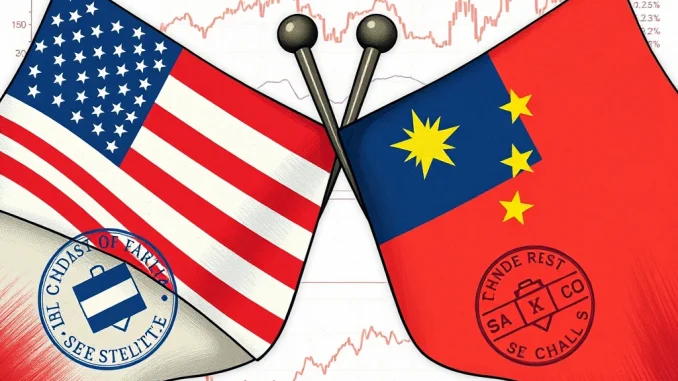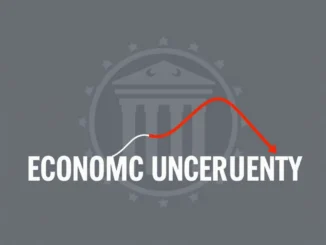
Economic news often sends ripples across global markets, and for those tracking cryptocurrencies, understanding these broader shifts is key. A significant development regarding **Trump tariffs** and their impact on **China imports** has emerged, suggesting potential changes to the complex landscape of **US China trade** relations.
What’s Being Discussed Regarding Trump Tariffs and China Imports?
According to reports citing The Wall Street Journal, the Trump administration is actively considering a substantial reduction in existing **Trump tariffs** on goods imported from China. The proposal being weighed involves cutting these tariffs significantly, potentially bringing them down to a range of 50% to 65% of their current levels.
Key points of the discussion include:
- Potential reduction range: Tariffs could be cut by 50% to 65%.
- Tiered system: A differentiated approach is under consideration. Lower tariff rates would apply to non-strategic goods, while items deemed critical for national security would face higher rates.
- Source: The information comes via Walter Bloomberg, citing reporting from The Wall Street Journal.
- Status: Importantly, no final decision has been made. These are discussions and considerations currently underway within the administration.
Why Are These Potential Tariff Cuts on China Imports Being Weighed?
The primary driver behind exploring these **tariff cuts** appears to be the desire to ease ongoing **trade tensions** between the United States and China. The multi-year trade dispute has impacted various industries and contributed to global economic uncertainty. Reducing tariffs could be seen as a step towards de-escalation and fostering a more stable trade environment.
Furthermore, some economists argue that reducing import tariffs could potentially help combat domestic inflation by lowering the cost of goods entering the country. While the direct impact is debated, it’s a factor that administrations often consider when reviewing trade policies.
How Could Potential Tariff Cuts Impact US China Trade and Global Markets?
Any significant change to **Trump tariffs** would naturally reshape **US China trade** dynamics. Lowering tariffs could make Chinese goods cheaper for American consumers and businesses, potentially increasing imports. Conversely, it could impact domestic industries that previously benefited from the protection of higher tariffs.
For global markets, including the cryptocurrency space, news of easing **trade tensions** is generally viewed positively. Reduced uncertainty in major economic relationships can improve investor sentiment. While the link isn’t always direct, a more stable global economy often provides a more favorable backdrop for risk assets like cryptocurrencies. However, the specific details of any cuts and China’s reaction would determine the true market impact.
What Does This Mean for Trade Tensions Moving Forward?
The fact that the Trump administration is even considering such significant **tariff cuts** suggests a potential shift in strategy regarding **trade tensions** with China. While discussions are ongoing and outcomes uncertain, it indicates a willingness to explore avenues for de-escalation. Market participants will be closely watching for further developments, as a definitive decision could signal a new phase in the complex **US China trade** relationship.
Conclusion: Navigating Uncertainty in Trade Policy
The news that the Trump administration is weighing substantial **tariff cuts** on **China imports** marks a significant point in the ongoing narrative of **US China trade** relations. These potential **tariff cuts**, aimed at easing **trade tensions**, could have wide-ranging implications for economies and markets globally. While the final decision remains pending, staying informed about these developments is crucial for understanding the broader economic climate that influences various asset classes, including cryptocurrencies. The coming weeks will likely reveal more about the future direction of these critical trade policies.



